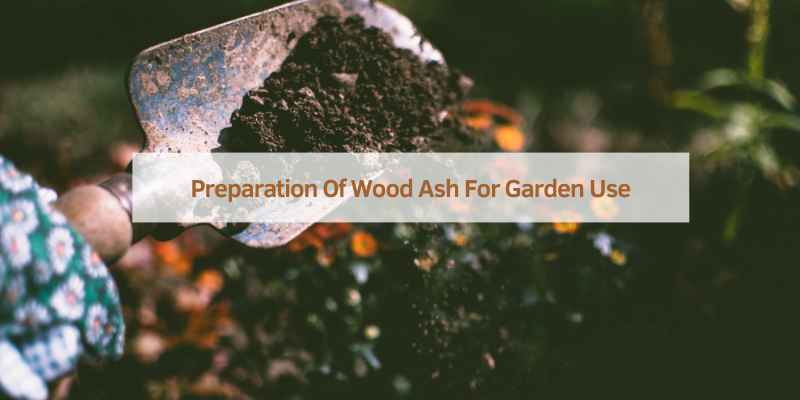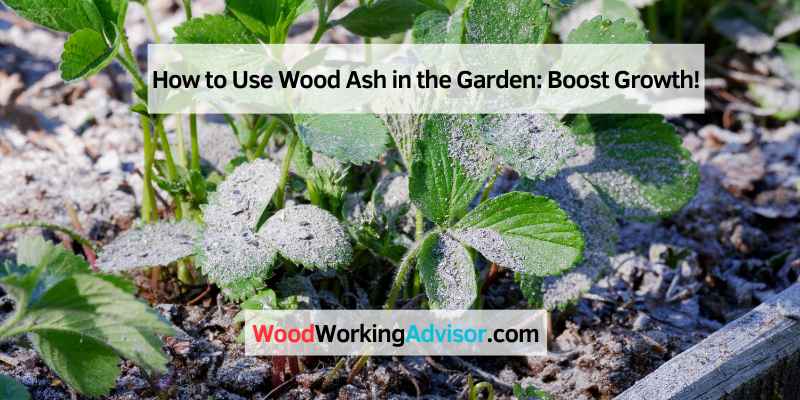To use wood ash in the garden, sprinkle it lightly around plants or mix it into compost. Avoid overuse to prevent soil imbalance.
Wood ash, a byproduct of burning wood, offers valuable nutrients for gardening. Rich in potassium, calcium, and other minerals, it enhances soil fertility. Gardeners can leverage wood ash to improve soil pH, making it less acidic. This helps create an optimal environment for plant growth.
Use wood ash sparingly, as excessive amounts can harm plants by altering soil composition. Always ensure the ash is cool and free from contaminants before application. By integrating wood ash properly, gardeners can promote healthier and more productive gardens.
The Benefits Of Wood Ash In Gardening
Wood ash is a rich source of minerals that are beneficial for plants. It contains potassium, calcium, and magnesium. These minerals help in plant growth. Potassium strengthens the plant’s immune system. Calcium improves soil structure. Magnesium is vital for photosynthesis. Using wood ash can improve the overall health of your garden.
Wood ash acts as a natural soil amendment. It can help balance the pH level of the soil. Most soils benefit from a slight increase in pH. Wood ash can make acidic soil more neutral. This helps plants absorb nutrients better. Always use wood ash in moderation. Too much can harm the soil. Mix it well with compost for the best results.

Preparation Of Wood Ash For Garden Use
Collect wood ash from clean, untreated wood. Store it in a dry container with a tight lid. Wet ash can clump and lose effectiveness. Use a metal container to avoid fire risks. Keep it away from children and pets. Label the container for safety.
Ensure the wood ash is free from contaminants. Avoid ash from painted or treated wood. Sift the ash to remove large debris. Pure ash is safe for the garden. Check for nails or other metal pieces. Pure wood ash helps plants grow better.
Safety Measures When Handling Wood Ash
Wear gloves to protect your hands from irritation. Use a mask to avoid inhaling ash particles. Goggles can prevent ash from getting into your eyes. Always wear long sleeves and pants to cover your skin.
Store wood ash in a metal container with a tight lid. Keep the container in a dry area to prevent moisture. Place the container away from flammable materials. Make sure the container is labeled to avoid confusion. Check the container regularly for any signs of rust or damage.
Assessing Garden Soil Compatibility
Enhance soil quality by incorporating wood ash into your garden. This natural amendment boosts pH levels and provides essential nutrients. Ensure proper balance to avoid over-alkalizing the soil.
Soil Ph Testing
Wood ash can be very beneficial for your garden. First, you must test the soil pH. This helps you know if your soil is acidic or alkaline. Most plants like soil that is not too acidic. Use a pH testing kit to measure the soil. Follow the instructions on the kit. Check the results and see if wood ash is right for your soil.
Understanding Nutrient Requirements
Plants need nutrients to grow strong and healthy. Wood ash contains important nutrients like potassium and calcium. These nutrients help plants grow better. But too much wood ash can harm plants. So, add wood ash in small amounts. Always monitor your plants and see how they react.
Correct Application Of Wood Ash
It’s important to use wood ash wisely. Too much can harm your plants. A good rule is to use one cup of ash for every square yard. This amount keeps the soil balanced. Always test your soil first. Knowing the pH level helps you decide how much ash to use.
Apply wood ash during the winter or early spring. This allows it to mix well with the soil. Spread the ash evenly over your garden. Do this only once a year. Repeated use can raise soil pH too much. Always water the soil after applying ash. This helps it to settle in properly.
Boosting Growth For Specific Plants
Wood ash can be a great addition to vegetable gardens. It provides essential nutrients like potassium and calcium. These nutrients help plants grow strong. Mix the ash into the soil lightly. Too much ash can harm plants. Use small amounts for the best results.
Adding wood ash to flower beds can improve blooming. The ash raises soil pH levels. This helps flowers absorb nutrients better. Sprinkle a thin layer of ash over the soil. Then, water the area well. This helps the ash mix into the soil. Too much ash can be harmful, so use sparingly.
Wood Ash And Composting
Wood ash enriches compost by adding essential nutrients like potassium and calcium. Sprinkle it sparingly to balance soil pH. Avoid using ash from chemically treated wood to ensure garden safety.
Enhancing Compost Nutrients
Wood ash can make compost better. It adds important nutrients. These nutrients help plants grow strong. Always use a small amount of wood ash. Too much can harm the plants. Wood ash adds calcium and potassium. These are good for the soil. It also helps keep bugs away.
Layering Techniques
Layer wood ash with other compost materials. Start with a thin layer of wood ash. Next, add grass clippings or leaves. Then, add kitchen scraps. Repeat these layers. This helps the compost mix well. Always keep the layers thin. This makes sure the compost does not become too alkaline.
Preparation Of Wood Ash For Garden Use
Wood ash can help keep pests away. Sprinkle a thin layer around plants. The ash will deter slugs and snails. It also helps to control ants and other crawling insects. Avoid using too much ash. Too much can harm your plants. Make sure to wear gloves when handling ash. It can irritate your skin.
Wood ash can be used on icy garden paths. Sprinkle ash on the ice to provide traction. The ash will melt the ice faster. It is a natural and eco-friendly option. Ash won’t harm plants or soil. Keep a bucket of ash handy during winter. This makes it easy to grab when needed.

Frequently Asked Questions
Which Plants Like Wood Ashes?
Wood ashes benefit plants like tomatoes, roses, and carrots. They prefer alkaline soil conditions. Use sparingly to avoid soil imbalance.
Which Vegetables Do Not Like Wood Ash?
Vegetables like potatoes, tomatoes, and peppers do not like wood ash. Wood ash can raise soil pH, harming these plants.
How To Apply Wood Ash To Plants?
Apply wood ash sparingly around plants. Ensure the ash is dry and cool. Mix into soil gently. Avoid direct contact with plant stems. Water thoroughly after application.
Do Tomatoes Like Wood Ash?
Yes, tomatoes benefit from wood ash. It provides essential nutrients like potassium, calcium, and trace minerals. Use sparingly to avoid soil pH imbalance.
Conclusion
Embracing wood ash in your garden enriches the soil and boosts plant health. Apply it sparingly to avoid over-alkalizing. Wood ash can act as a natural pest deterrent and provide essential nutrients. Experiment with wood ash to see its benefits.
Your garden will thrive with this eco-friendly addition.


